 I have known Marco Cardin for a couple of years because besides being an accomplished amateur astro-imager he is also an avid visual observer. His encyclopedic knowledge of the night sky wonders is a great help on the field during the monthly night-long observations in dark, moonless nights we spend on the eastern Alps, trying to squeeze the most out of the 16" Dobson telescopes we carry with us. These instruments have no fancy "go-to" features, but with Marco's help and organization we can frame close to 100 rarely seen objects per night.
I have known Marco Cardin for a couple of years because besides being an accomplished amateur astro-imager he is also an avid visual observer. His encyclopedic knowledge of the night sky wonders is a great help on the field during the monthly night-long observations in dark, moonless nights we spend on the eastern Alps, trying to squeeze the most out of the 16" Dobson telescopes we carry with us. These instruments have no fancy "go-to" features, but with Marco's help and organization we can frame close to 100 rarely seen objects per night. Recently Marco won a prestigious award for his work on the inner planets. I asked him to report for us here on his studies of Venus and his imaging tricks, which are highly interesting. Images of this quality were not at reach of even the largest telescopes only 25 years ago. Enjoy!
Marco Cardin: Imaging Venus in Violet Light
Everybody knows that Venus does not show any detail of its atmosphere in white light, whereas the situation changes drastically in ultraviolet (UV) light, but this wavelength is difficult to use. Therefore, this planet has been pratically "useless" for the astro-amateurs until a few years ago.
Fortunately, it is not necessary to use a hard UV filter: a lighter violet/dark blue filter like the common Wratten #47 (W47) is enough. The contrast is slightly lower but it has three advantages:
- it is cheaper (but remember that W47 needs the IR-block filter in addiction);
- you can use it even for visual observations;
- it gives much more signal.
That is why I prefer the W47, since I obtain a good contrast in my images anyway.
In any case, the most important thing is to use a black/white (BW) CCD. I used the webcam Philips ToUcam pro II with the BW-transplanted sensor (Sony ICX-098BL) until spring 2009, but now I have the much better Imaging Source DMK21, wich has the same CCD of the former camera but a more sophisticated electronics, which generates less noisy images.
And what about the telescopes? The best kind of telescope for UV/violet imaging is the Newtonian reflector because it has no glass in the light path (a Cassegrain telescope shares this merit). Indeed, the glass absorbs a certain amount of UV light, and even the best apochromatic refractors can have some spheric or chromatic aberration at that wavelength. I have been using a 250 mm f/5 Newton since early 2007, and I increase the focal length with eyepiece projection (a 12,5 mm orthoscopic in a variable tele-extender) for obtaining the correct high-resolution sampling.
I followed the last four Venus apparitions: two in the evening sky, two in the morning; the first three were done with the webcam and the last one with the DMK. Here you can see some of my best pictures:

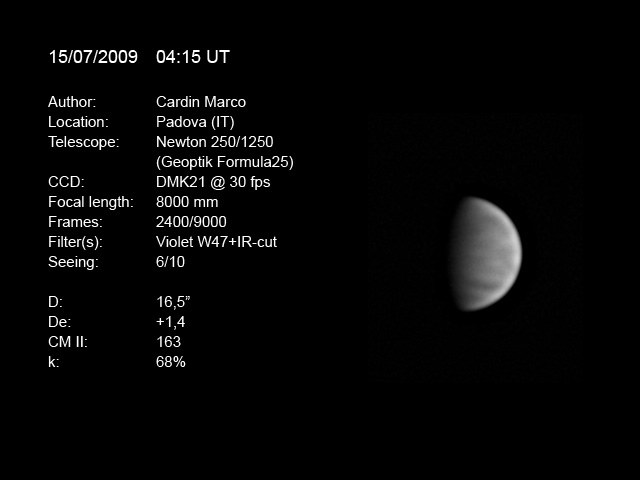
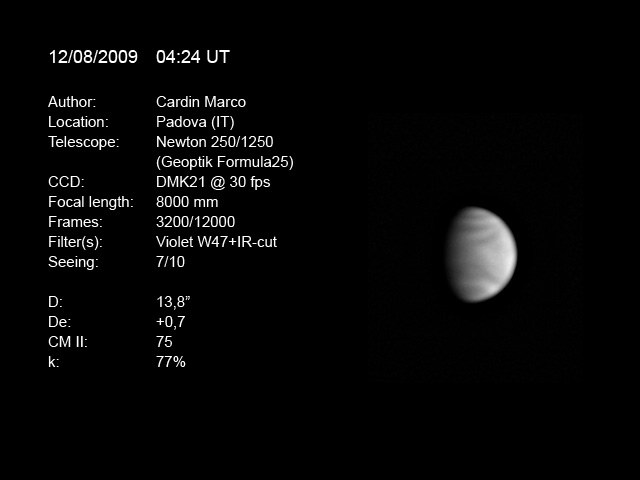
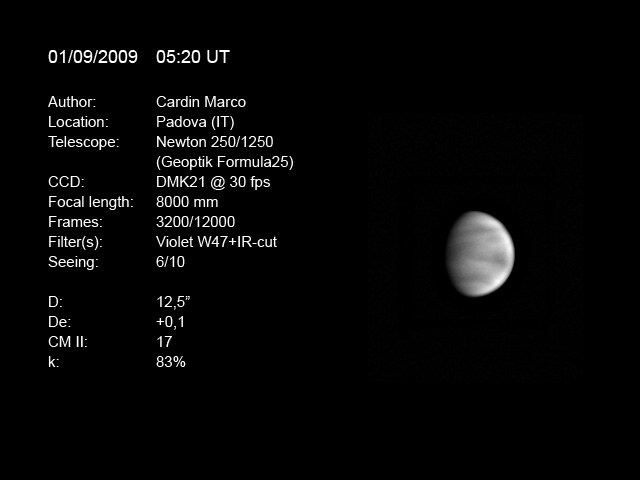
Now let us come back to the observable Venus features.
The UV atmosphere rotates in 4.2 days (101 hours), so it is much faster than the surface, which rotates in 243 terrestrial days. The reason of this "super-rotation" is not yet known. Hence this is a great point of interest and amateur observations could be useful for collecting data. In fact this rotation period leads to two interesting situations:
1. One can notice the rotation of about 3° in an hour (we cannot follow it with benefit for a long time since the broad daylight observations are difficult and give bad results, because Rayleigh scattering is very strong at small wavelengths, with a consequently low signal to noise ratio. Therefore, the best moment for taking pictures of Venus is around the time when the Sun is at the horizon: that is the best compromise between the darkness of the sky and the altitude of the planet above the horizon). I took a few pairs of images under such conditions, and composed the following gif animations:
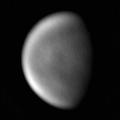
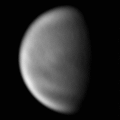
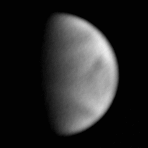
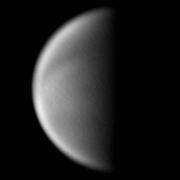
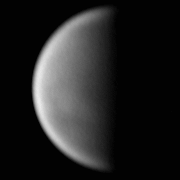
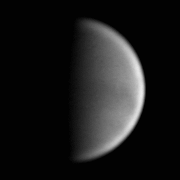
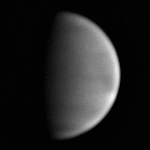
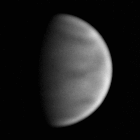

2. If you watch Venus every 4 days, you will see almost the same hemisphere (with a difference of about 12° in longitude), so you can see the changes in the shape of the clouds. I caught some pairs of images at four-day intervals, please compare:
2007/04/05 with day 09:
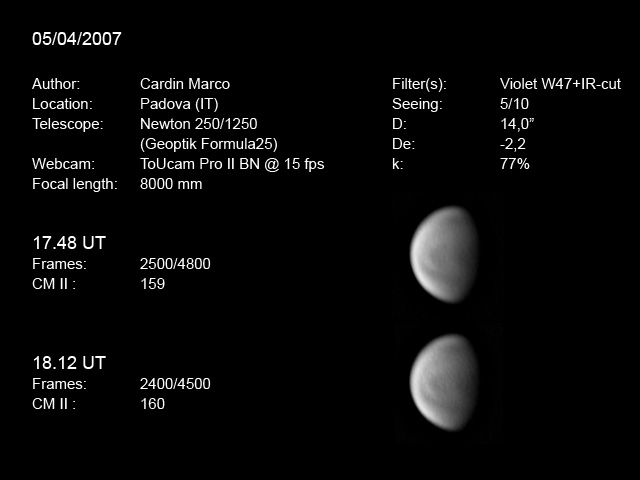
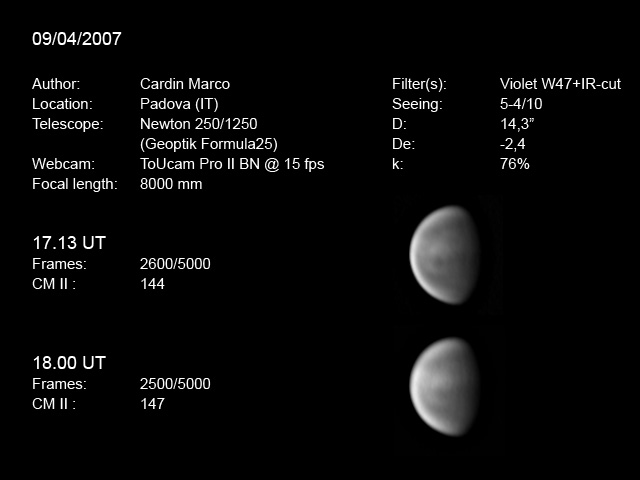
2007/05/20 with day 24:
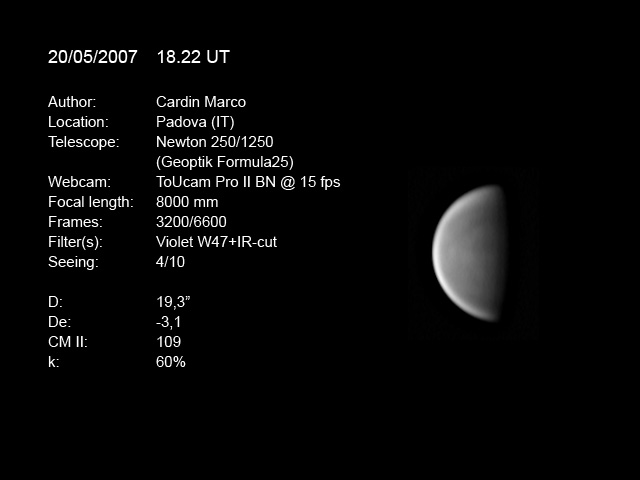
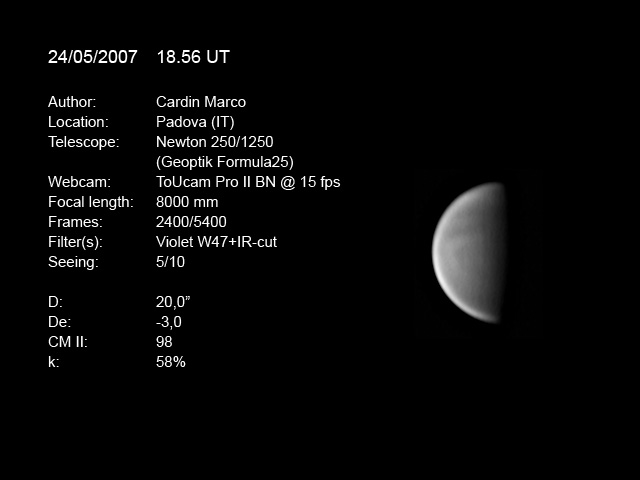
2007/10/12 with day 16:

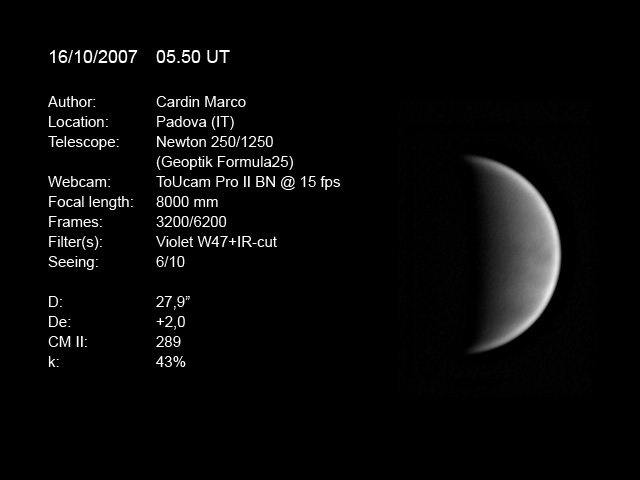
2009/08/13 with day 17 (they are totally different to each other!):
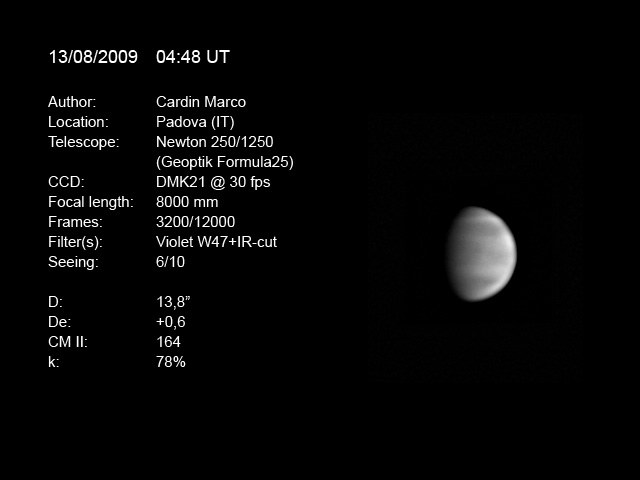
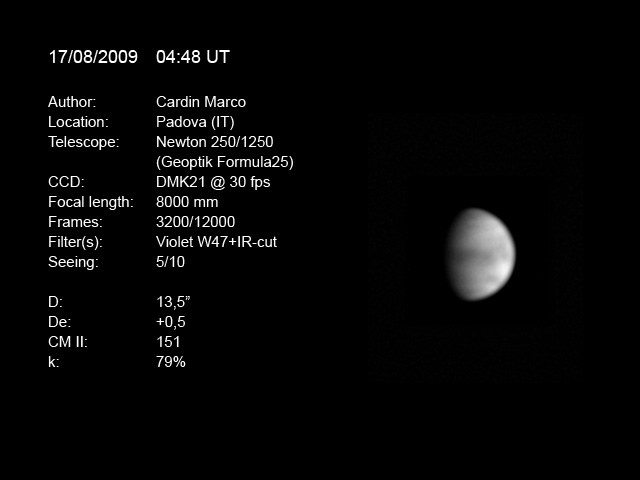
Finally, if you are lucky and you have five consecutive days with good weather, you can make an entire planisphere... and I did this too (with the pictures of august 15 to 19)!

However, remember that the illuminated fraction has to be of at least about 75% if you want to obtain good conjunctions between the pieces of the map, otherwise you need to join the pictures from different observers located in different time zones in the world.
A last thing to note: the advantage of Venus with respect to the other planets is its slower rotation (as said before, you need at least half an hour for noting a difference, against the two minutes of Jupiter): this allows to take some very long videos and stack a lot of frames. I usually capture about ten videos of 1500 frames in ten minutes, then for every one I stack the best 400 frames and finally I sum the best 6-8 images thus obtained. It is very useful for killing the noise and magnify that low contrast features with wavelet or unsharp-mask algorithms. Besides, it is possibile, if not always recommended, to use a stronger processing respect to the delicated objects like the Moon or Saturn.





Comments